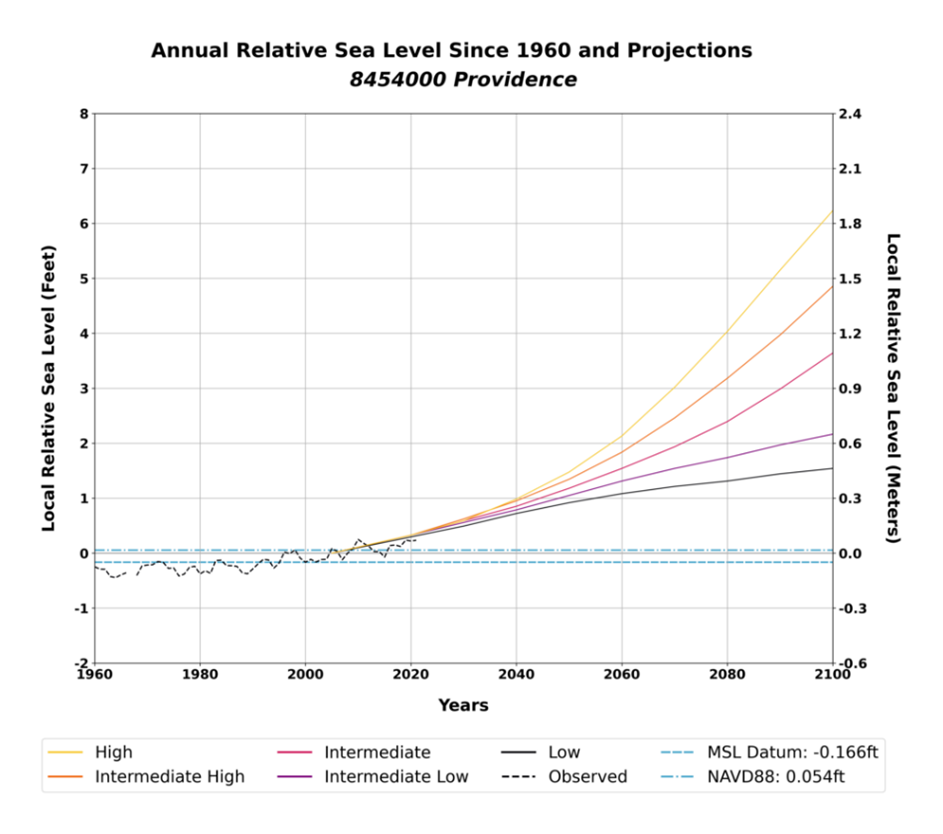Sea level rise presents a pressing challenge both globally and locally. As global temperatures rise, largely due to climate change, our oceans warm, contributing significantly to the phenomenon of SLR. The Northeast region, including Rhode Island, has experienced SLR at an alarming rate, three to four times faster than the global average. Providence in Rhode Island has witnessed a rise of 5 inches since 1956, and an acceleration in the rate of increase.
On a global level, sea level has risen by 8 to 9 inches since 1880, with estimates suggesting a potential rise of 10 to 12 inches along US coastlines by 2050. Projections paint a concerning picture for the future of US coastlines if current emission trends remain unchecked. Sea levels could surge to between 3.5 and 7 feet by the year 2100. In Providence, data spanning from 1938 to 2022 shows a relative sea level rise of 2.46 mm per year, which is equivalent to 0.81 feet over a century. Overall, sea levels in Rhode Island are projected to rise to 8.99 feet by 2100.
The implications of SLR are multifaceted, including coastal flooding and tide-related incidents that pose considerable risks to Rhode Island's extensive 400-mile shoreline. This vulnerability extends to coastal infrastructure, communities, and vital ecosystems such as salt marshes. Addressing the challenges of SLR demands concerted efforts on multiple fronts. It requires comprehensive strategies to strengthen coastal defenses, adapt infrastructure, and safeguard natural habitats.
